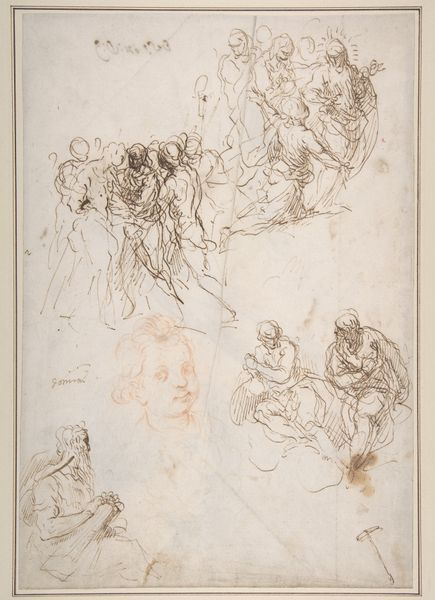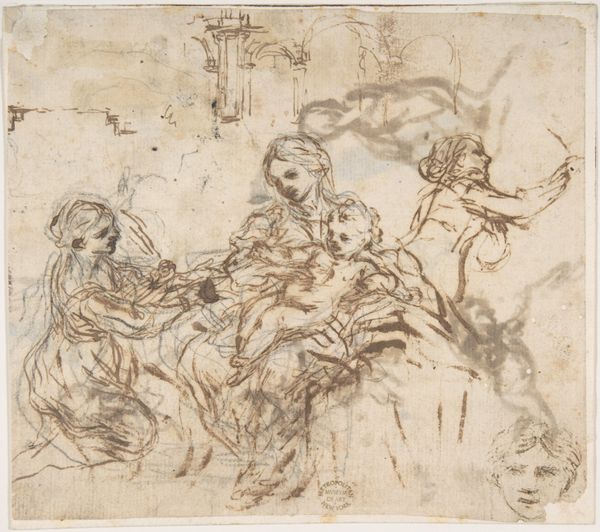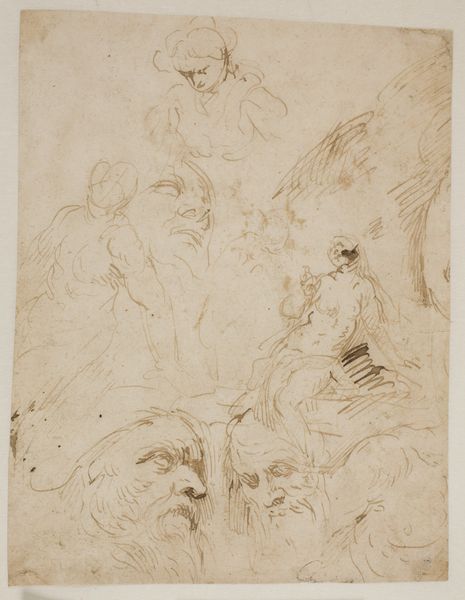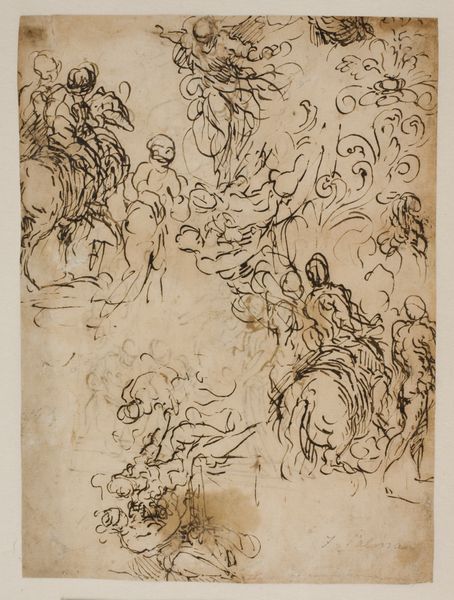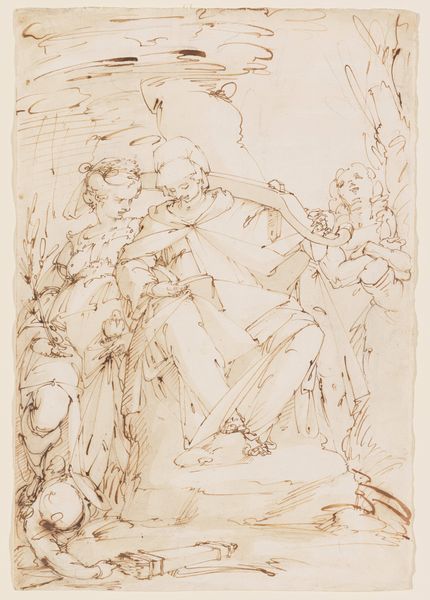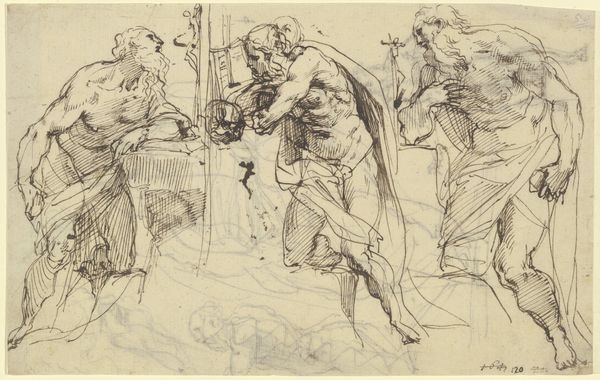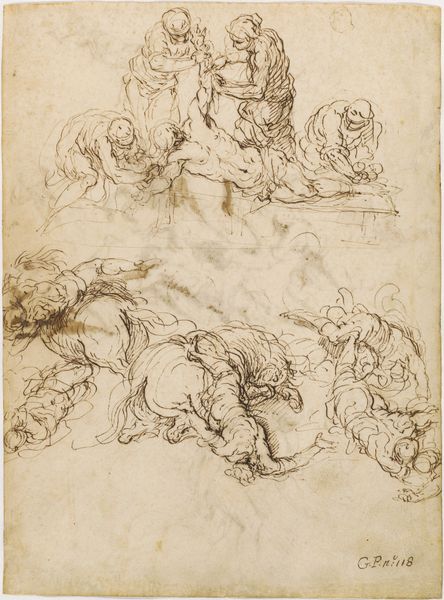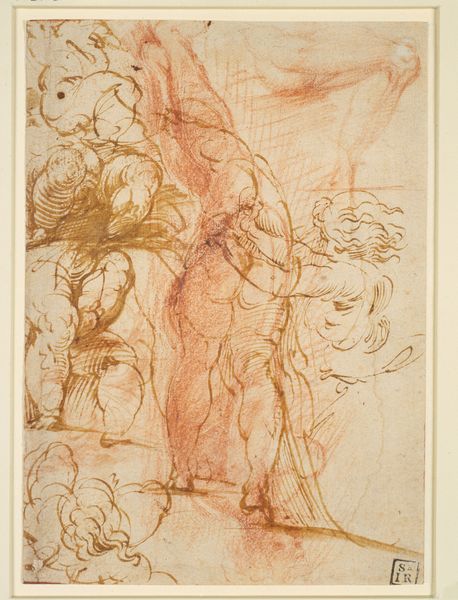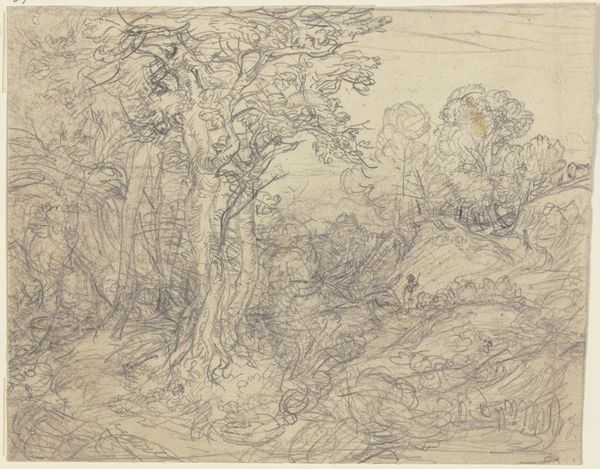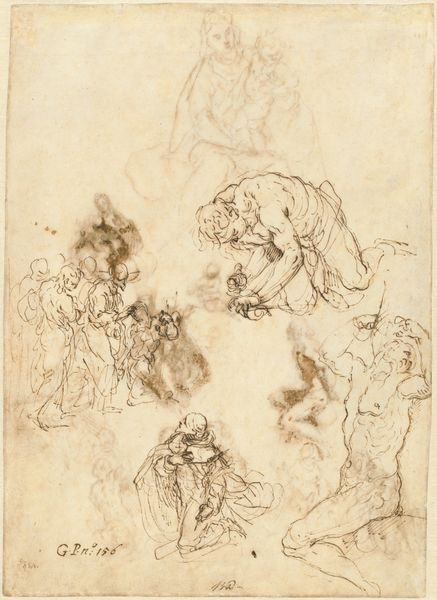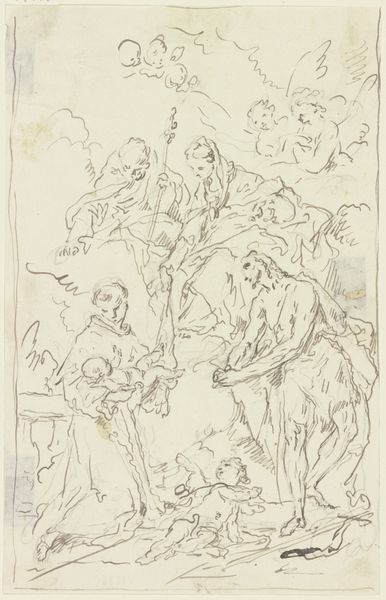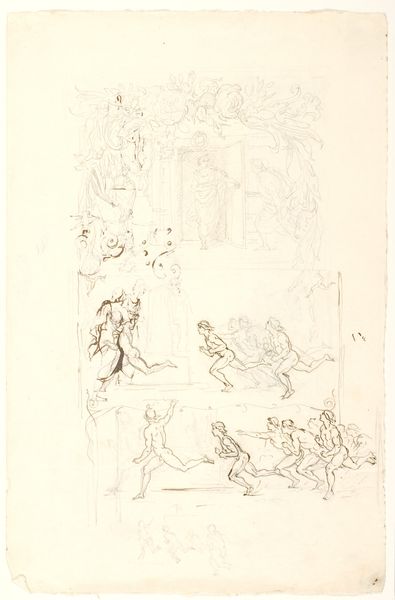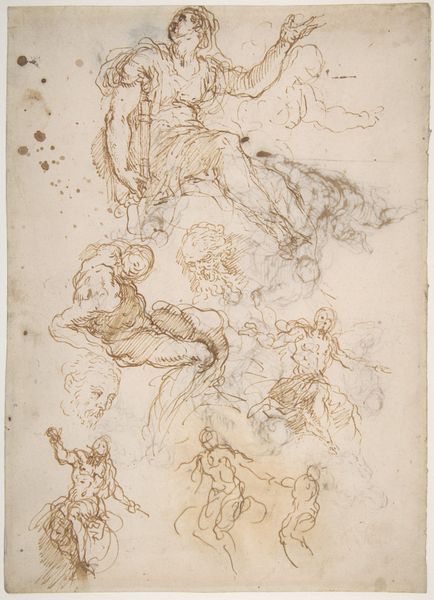
Studies of Nudes and Human Heads (recto and on the verso) 1557 - 1602
0:00
0:00
drawing, print, paper, ink
#
portrait
#
drawing
#
ink painting
# print
#
figuration
#
paper
#
11_renaissance
#
ink
#
history-painting
#
italian-renaissance
Dimensions: Sheet: 8 7/16 x 8 1/8 in. (21.5 x 20.7 cm)
Copyright: Public Domain
Editor: So, this is "Studies of Nudes and Human Heads (recto and on the verso)" by Agostino Carracci, dating sometime between 1557 and 1602. It’s an ink drawing on paper. My first impression is how dynamic all the figures are, bursting with anatomical energy. What do you see in this piece? Curator: Ah, Carracci. It’s like stumbling into his mental gym, isn’t it? These drawings breathe with the raw curiosity of the Renaissance. Look at the hatching, the bold, confident strokes—almost as if he’s wrestling the human form onto the page. I see not just studies of muscles and bone, but the artist’s very process, his restless probing. Do you sense the narrative he is attempting to craft? Editor: I do, now that you point it out! There's this…almost feverish energy. A need to understand, to capture something fleeting about the human condition. Curator: Exactly! Imagine him, in his studio, fueled by lamplight and endless questions, chasing the echo of Michelangelo, perhaps, but with his own distinctly Emilian accent. It’s a backstage pass to the artistic mind at its most fervent. Does the raw nature of the work take away or add something? Editor: It adds a great deal; the rawness, you mentioned, feels…almost more alive than a finished painting. It’s like peeking behind the curtain. Curator: A perfect analogy! Sometimes, the most unfinished things reveal the most profound truths. That untamed energy resonates centuries later, doesn't it? It whispers: keep searching, keep questioning, keep wrestling with form and meaning. And that, my friend, is what makes art eternally captivating. Editor: It’s amazing how much insight can be gleaned from what seems like a simple preparatory sketch. Thanks for illuminating that! Curator: My pleasure! Every squiggle holds a story if you’re willing to listen closely enough. Now, off to decode another mystery!
Comments
No comments
Be the first to comment and join the conversation on the ultimate creative platform.
